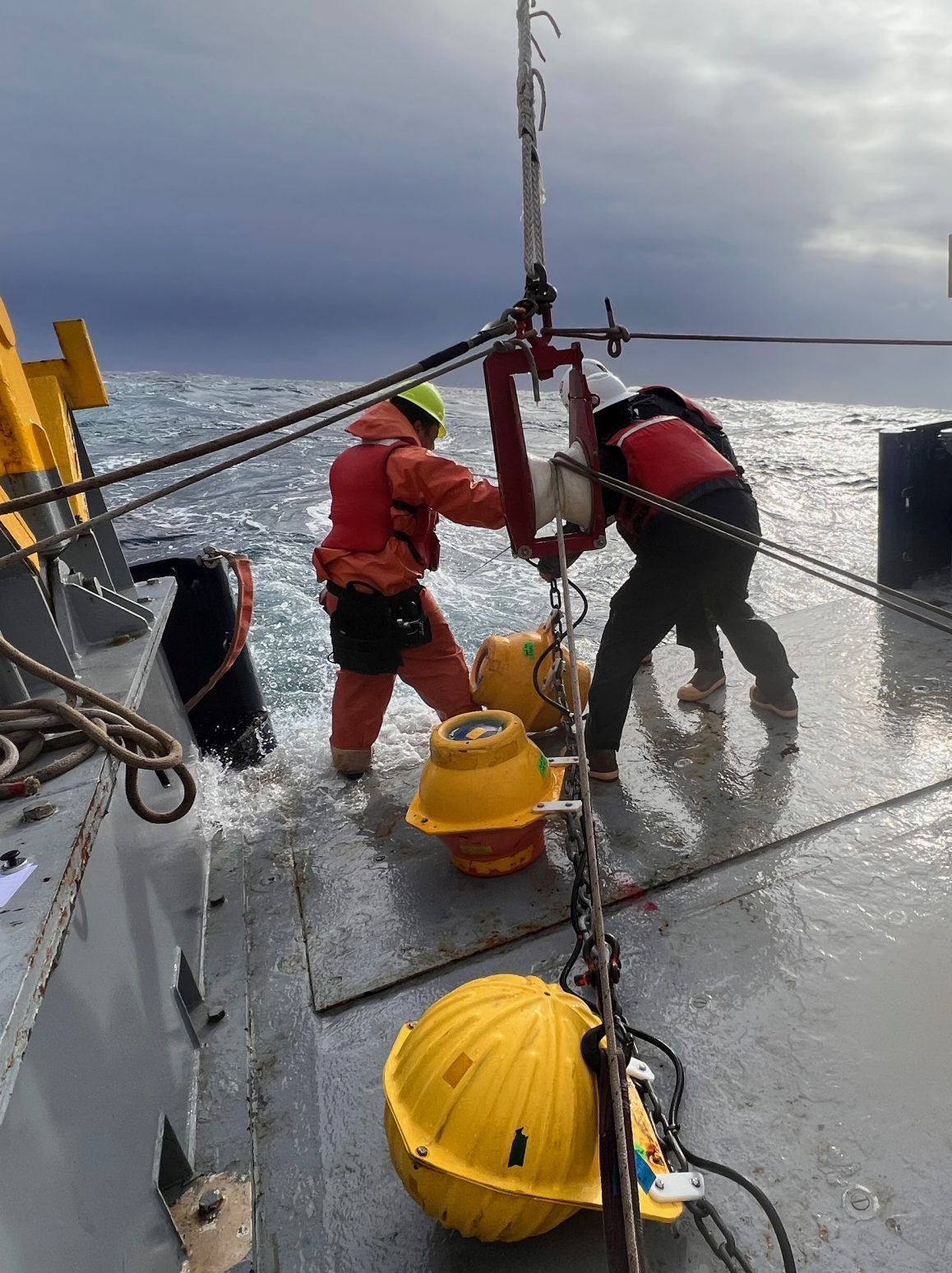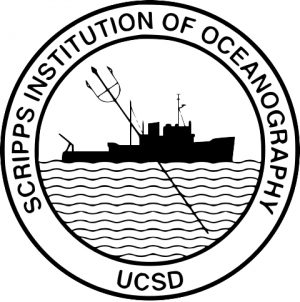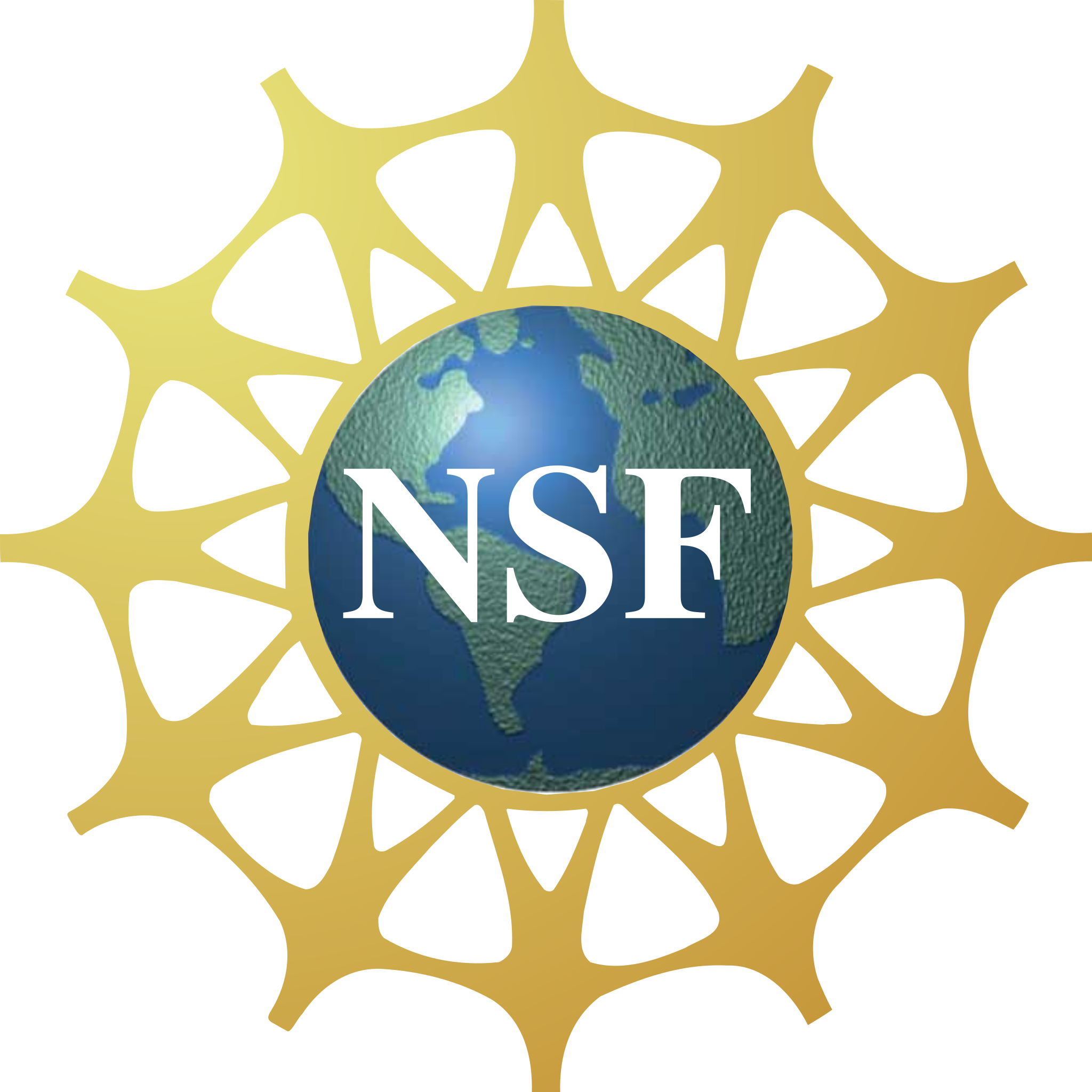
Global Internal Waves
Motivation
Internal waves are vertical disturbances in the ocean’s density layers with amplitudes of 10-100 meters and wavelengths of 10-100 kilometers. They are generated when the tides move over underwater ridges or by the winds. The generation, propagation, and dissipation of internal waves is relevant for:
- predicting coastal processes,
- detiding of satellite altimetry measurements of sea-surface height,
- ocean acoustics, and
- water-mass mixing, which crucially impacts ocean circulation and ultimately the Earth’s climate
Wave energy flux of tidal internal waves, as derived from satellite
altimetry. The hue shows the energy flux direction, and saturation shows flux magnitude; directional "beams" of internal waves are visible. Our NOPP projects are using data such as this for comparison with global models of internal waves. Credit: edward.d.zaron@oregonstate.edu
A new step forward in the predictability of global internal wave propagation
Our Approach
We will use arrays of field instrumentation (fixed and drifting assets), remote sensing and high-resolution modeling to understand how internal waves propagate in the global ocean
Goals
Our goals are to understand the generation, propagation, and dissipation mechanisms for oceanic internal gravity waves to enable seamless, skillful modeling & forecasts of these internal waves between the deep ocean and the shore.
Predictability of internal tides
Internal tides approaching the continental slope are unpredictable. Our goal is to improve that predictability using a combination of high-resolution observations, remote sensing and high resolution models. Advanced understanding of key processes in modifying and changing the nature of these propagating internal waves is a key focus of this work.
Specifically:
- Observations are designed & conducted to cover vast ranges and oceanic regimes,
- Field campaigns are organized to take advantage of coincident global observational programs (NASA SWOT mission, GO-SHIP)
- High-resolution models are run to track all components (stationary and non-stationary) of internal tides
- Simulations of extreme storm events will generate and track internal wave energy

Recent News

Postdoctoral Research Associate in Simulating Nonlinear Internal Waves
Job Summary: The Postdoctoral Research Associate will conduct high-resolution numerical modeling, data analysis, and model validation in collaboration with a…
maartenbuijsman

New internal tide corrections dataset available!
New Dataset based on HYCOM forecast system enhances Internal Tide corrections for SWOT Cal/Val The internal-wave resolving (IWR) modeling team…
awaterhouse

OSM 2026 is on the horizon!
We have many planned presentations about our various NGIW projects at the upcoming Ocean Sciences Meeting in February 2026. We…
awaterhouse
Academic










Government



Industry




Funding Agencies




